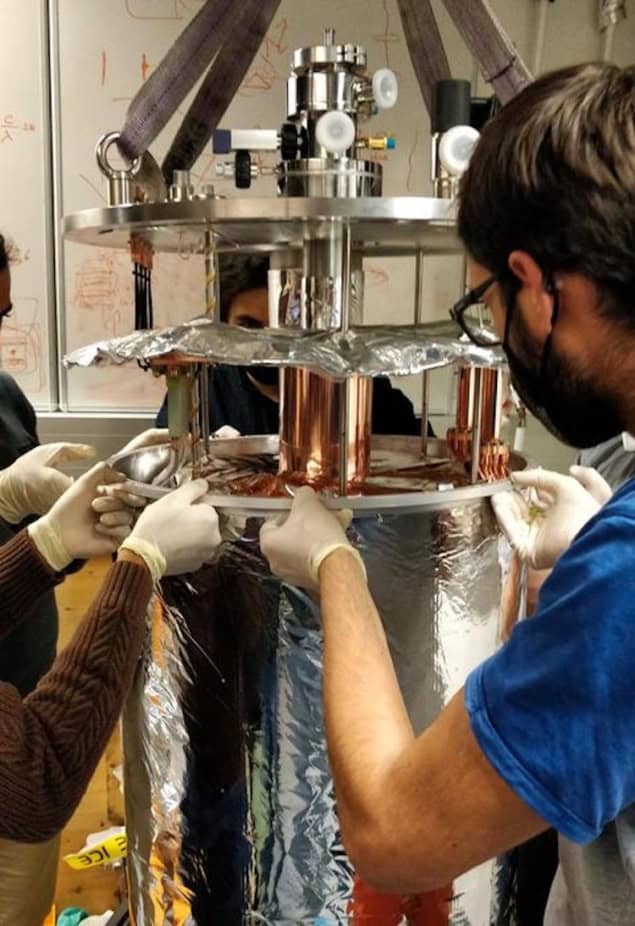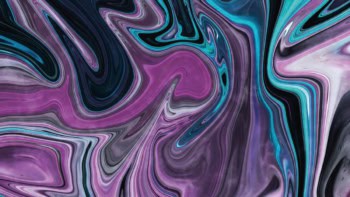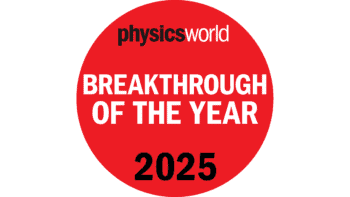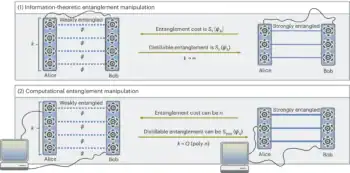
Physicists in Austria and Germany have developed a means of controlling quasiparticles known as dark excitons in semiconductor quantum dots for the first time. The new technique could be used to generate single pairs of entangled photons on demand, with potential applications in quantum information storage and communication.
Excitons are bound pairs of negatively charged electrons and positively charged “holes”. When these electrons and holes have opposite spins, they recombine easily, emitting a photon in the process. Excitons of this type are known as “bright” excitons. When the electrons and holes have parallel spins, however, direct recombination by emitting a photon is not possible because it would violate the conservation of spin angular momentum. This type of exciton is therefore known as a “dark” exciton.
Because dark excitons are not optically active, they have much longer lifetimes than their bright cousins. For quantum information specialists, this is an attractive quality, because it means that dark excitons can store quantum states – and thus the information contained within these states – for much longer. “This information can then be released at a later time and used in quantum communication applications, such as optical quantum computing, secure communication via quantum key distribution (QKD) and quantum information distribution in general,” says Gregor Weihs, a quantum photonics expert at the Universität Innsbruck, Austria who led the new study.
The problem is that dark excitons are difficult to create and control. In semiconductor quantum dots, for example, Weihs explains that dark excitons tend to be generated randomly, for example when a quantum dot in a higher-energy state decays into a lower-energy state.
Chirped laser pulses lead to reversible exciton production
In the new work, which is detailed in Science Advances, the researchers showed that they could control the production of dark excitons in quantum dots by using laser pulses that are chirped, meaning that the frequency (or colour) of the laser light varies within the pulse. Such chirped pulses, Weihs explains, can turn one quantum dot state into another.
“We first bring the quantum dot to the (bright) biexciton state using a conventional technique and then apply a (storage) chirped laser pulse that turns this biexciton occupation (adiabatically) into a dark state,” he says. “The storage pulse is negatively chirped – its frequency decreases with time, or in terms of colour, it turns redder.” Importantly, the process is reversible: “To convert the dark exciton back into a bright state, we apply a (positively chirped) retrieval pulse to it,” Weihs says.
One possible application for the new technique would be to generate single pairs of entangled photons on demand – the starting point for many quantum communication protocols. Importantly, Weihs adds that this should be possible with almost any type of quantum dot, whereas an alternative method known as polarization entanglement works for only a few quantum dot types with very special properties. “For example, it could be used to create ‘time-bin’ entangled photon pairs,” he tells Physics World. “Time-bin entanglement is particularly suited to transmitting quantum information through optical fibres because the quantum state stays preserved over very long distances.”
The study’s lead author, Florian Kappe, and his colleague Vikas Remesh describe the project as “a challenging but exciting and rewarding experience” that combined theoretical and experimental tools. “The nice thing, we feel, is that on this journey, we developed a number of optical excitation methods for quantum dots for various applications,” they say via e-mail.

Scientists image excitons in carbon nanotubes for the first time
The physicists are now studying the coherence time of the dark exciton states, which is an important property in determining how long they can store quantum information. According to Weihs, the results from this work could make it possible to generate higher-dimensional time-bin entangled photon pairs – for example, pairs of quantum states called qutrits that have three possible values.
“Thinking beyond this, we imagine that the technique could even be applied to multi-excitonic complexes in quantum dot molecules,” he adds. “This could possibly result in multi-photon entanglement, such as so-called GHZ (Greenberger-Horne-Zeilinger) states, which are an important resource in multiparty quantum communication scenarios.”



